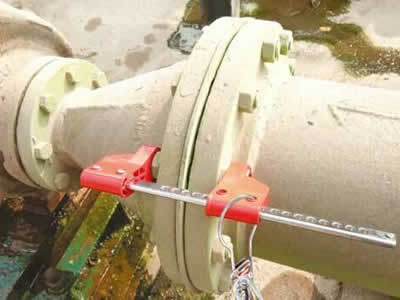A blind flange lockout device is a safety improvement used during maintenance on piping systems. Let’s explore its purpose and how it enhances workplace safety:
Purpose:
- Blind flanges are designed to permanently seal off one end of a pipe. It is used to seal off an unused connection point on a pipeline or equipment. During maintenance, blind flanges allow easy access for inspection, cleaning, or modifications.
- The blind-flange lockout device is designed to eliminate the opportunity for all bolts to be removed.
- Its purpose is to ensure that the blank or blind remains in place, preventing: Premature releases of energy downstream or accidental release of hazardous chemicals into the environment.
Why Is It Needed?:
- The blind flange lockout device serves as a safety improvement during maintenance work on piping systems. We consider them as another layer of safety because they require similar effort to remove as padlocks.
- Relying solely on tags for blanks or blinds is not fool proof. Tags provide only a general warning and may be ignored or forgotten by workers.
How Does It Work?:
- The blind-flange lockout device covers the bolts securing the blind flange.
- By doing so, it eliminates the opportunity for all bolts to be removed.
- This ensures that the blank or blind remains in place, preventing premature releases of energy downstream or the release of chemicals into the environment.
Protective Method:
- During maintenance:
- The crew secures the pipeline by locking out upstream valves.
- A blank or blind is placed in the system to block any potential downstream flow.
- The flange bolts are torqued to proper specification.
- The blind-flange lockout device covers at least one of the torqued bolts.
In summary, the blind-flange lockout device enhances safety by preventing accidental removal of bolts, ensuring the blank or blind remains in place during maintenance activities.






